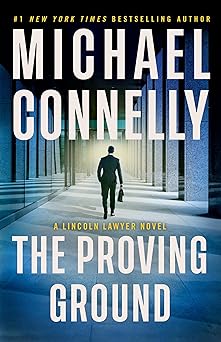
Christina Applegate's You with the Sad Eyes arrives as a raw, often hilarious, and occasionally brutal memoir from a performer whose public persona has long been a mix of comic timing and disarming openness. Told in Applegate’s unmistakable voice — quick, sardonic, and emotionally literate — this book stitches together a life lived under spotlights: childhood in an entertainment family, the dizzying lift-off of sitcom fame, the awkward and oddly tender detours of a film career, and the quiet, wrenching work of becoming someone who has to reckon with illness, memory, and the body she once took for granted.
What the memoir is (and what it isn't)
At its heart the book is a conversational excavation. Applegate refuses the glossy career-memoir structure: instead of a tidy through-line of professional triumphs, she interleaves set-by-set anecdotes with intimate confessions about family dynamics, identity, and the private aftermath of public life. There are chapters that read like stand-up bits — precise set-ups, devastating punchlines — and other passages that slow to a quiet, almost confessional cadence when she describes abandonment, abuse, body dysmorphia, and trauma. The balance between the comic and the catastrophic is the memoir’s strength; Applegate uses humor as a tool of survival and translation, not as a way to dodge pain.
Scope and honesty
The book covers the Laurel Canyon upbringing that shaped her early sensibilities, her breakout role as Kelly Bundy on Married... with Children, and the years of film and TV work that followed. Crucial to the emotional spine of the memoir is Applegate’s account of living with a multiple sclerosis diagnosis, which prompted her to pause and reflect — and ultimately to write. She frames illness not simply as a medical fact but as an existential pivot: it altered her relationship with performance, with physical privacy, and with the future itself.
Voice and structure
Applegate’s voice is the book’s engine. Wry, candid, often self-deprecating, she has a knack for rendering celebrity life in ordinary human terms: the boredom between set-ups, the humiliations that make headlines and those that never do, and the small kindnesses that sustain a hectic life. Structurally, the memoir opts for impression over chronology at times — scenes and memories are arranged to illuminate themes (survival, shame, resilience) rather than a strict timeline. That choice rewards readers who come for texture and tone, though those seeking a blow-by-blow career chronology may find themselves piecing dates and events together as they read.
Notable passages and emotional highs
Some of the book’s most affecting passages are not the headline-making revelations but the quieter moments: an account of therapy sessions where language finally aligns with feelings; an unvarnished look at caregiving and the shifting dependencies between parent and child; and sections where Applegate describes the paradox of being recognized by millions while still wrestling with private loneliness. The comedic sections — recollections of auditions, on-set mishaps, and celebrity encounters — are sharp and precise, but the memoir’s lasting power comes from where the humor recedes and vulnerability takes over.
Themes and cultural context
You with the Sad Eyes engages with larger conversations about child stardom, the costs of entertainment industry success, and the long shadow of trauma passed between generations. Applegate interrogates how fame both shields and exposes, how it can offer mobility and simultaneously freeze emotional development. Her reflections on body image and public perception — especially important given her years in a hyper-visible industry — are candid and often corrective, refusing the easy glamour narratives that often surround Hollywood memoirs.
Craft and pacing
At roughly 300 to 320 pages depending on edition, the memoir moves nimbly. The pacing mirrors Applegate’s comedic instincts: brisk set-ups followed by fuller, slower beats when the subject demands it. Editors will note the tonal shifts — from punchline to pathos — are managed with care, and the result is a textured read that rarely feels manipulative or engineered for scandal.
Where the book could have dug deeper
For readers hungry for an exhaustive, investigative exploration of certain difficult episodes — legal matters, long-hidden family histories, or precise timelines of alleged abuses — the memoir sometimes holds back. Applegate often prefers impressionistic detail and emotional truth over forensic accounting. That’s a deliberate artistic choice, but it means some readers will find themselves wanting more corroboration or context in particular sections.
Audience and impact
This memoir will land strongly with fans of Applegate’s work and with readers who appreciate celebrity accounts that prioritize interiority over celebrity resume lists. Equally, those interested in illness narratives — especially stories of living with MS — will find much to value: the litany of small losses and the stubborn quotidian victories that illness writing can make visible. Applegate’s stated hope that the book will make people feel less alone is woven through the narrative; where it succeeds, it does so by creating a conversational intimacy that feels like an old friend speaking plainly.
Final verdict
You with the Sad Eyes is a memoir of contrasts: funny and grave, sparing and detailed, performative and profoundly personal. Christina Applegate brings the instincts of a comedian and the attention of a careful memoirist to an account that explores how we hold grief and how we learn to speak about it. The book does not promise tidy resolutions; instead, it offers company — the kind of companionship that arrives when someone tells their truth without flinching. For readers seeking a humane, literate, and often fierce portrait of a life lived in public and processed in private, this memoir delivers.
Publication note
You with the Sad Eyes is published by Little, Brown and Company and is scheduled for release on March 3, 2026. The hardcover edition runs approximately 304 to 320 pages.









